Lemurs Are Having a Mysterious 'Baby Boom' in Madagascar. Here's Why That Might Not Be a Good Thing
Lemurs Are Having a Mysterious ‘Baby Boom’ in Madagascar. Here’s Why That Might Not Be a Good Thing Researchers are investigating a sudden spike in pregnancies in one black-and-white ruffed lemur population that might signal environmental stress to the mammals Elizabeth Preston, bioGraphic November 7, 2025 8:30 a.m. A population of black-and-white ruffed lemurs on Madagascar is experiencing changes in the cadence of its breeding, researchers say. Inaki Relanzon / Nature Picture Library Every August, about halfway through his journey into Madagascar, veterinarian Randy Junge decides he’s never doing it again. After 30 hours of travel from the United States to reach the island off the southeast coast of Africa, he and his colleagues face a 12-hour trip by car over roads that are “bad to nonexistent,” he says. Then a team helps them carry their gear to camp—a hike of 18 miles through the rainforest. Once he recovers a little, though, Junge—who is the vice president of conservation medicine at the Columbus Zoo and Aquarium in Ohio—always changes his mind. He’ll be back. What stands to be learned about the long-term consequences of environmental change to the health of Madagascar’s lemurs is just too important. Junge works with Andrea Baden, a biological anthropologist at Hunter College in New York, on a long-term project monitoring a remote population of black-and-white ruffed lemurs (Varecia variegata). Baden started the project at Ranomafana National Park in southeast Madagascar in 2005. Junge joined in 2017. Every summer, they camp out at the park for about ten days and work with a Malagasy team to capture lemurs; conduct medical exams; and collect blood, feces and other samples for later analysis. They also observe lemur families and social interactions. For the rest of year, Malagasy research technicians, guides and graduate students keep tabs on the lemurs’ activity. Because the site is so arduous to reach, it remains a relatively pristine habitat with undisturbed lemurs. But there are signs that the globally transforming climate is changing these lemurs, too. One of the researchers’ interests is the black-and-white ruffed lemurs’ fertility. The species breeds sporadically, but in 2024 the Ranomafana population had babies for an unprecedented second year in a row. The scientists fear that what looks like a miniature baby boom might actually be a sign that this species is in danger. Did you know? Where do lemurs live? Lemurs are only found in the wild on Madagascar and the nearby Comoro Islands. Like humans and chimpanzees, they are primates, though lemurs are more distant relatives of ours than the apes are. Black-and-white ruffed lemurs are largely arboreal, walking and leaping between tree branches across their forest habitat in search of fruit. Goran Safarek / Shutterstock Wild animals face challenges that their captive counterparts don’t. Back in Ohio, Junge’s animal patients at the zoo “live a pretty soft life,” he says. The lemurs he sees in the rainforest, by contrast, bear signs of their tougher environment, such as cracked teeth or broken fingers that have healed crooked. The environment also shapes reproduction. The pampered black-and-white ruffed lemurs in zoos breed every year and often bear litters of three to five infants. In their native habitat of Madagascar, where all wild lemur species dwell, the black-and-white ruffed lemurs have fewer babies at a time—if they get pregnant at all. Like other lemur species in the wild, black-and-white ruffed lemurs live in the treetops, eat mostly fruit and breed within a specific window of time. But unlike their cousins, which breed annually or at regular intervals such as every other year, black-and-white ruffed lemurs have unpredictable gaps between birth years. Their fickle fecundity is reinforced in a surprising way. Most of the time—as is the case with other lemur species—a female black-and-white ruffed lemur’s vulva has no opening at all. “They could not have sex if they wanted to,” Baden says. But for 24 to 72 hours around July of a lucky year, she says, “Their vagina will open like a flower.” There’s a brief frenzy of mating. Then the females close up shop again. “It’s totally weird,” Baden says. Researchers Randy Junge and Andrea Baden visit the Ranomafana forest in Madagascar each year to study black-and-white ruffed lemurs with their Malagasy colleagues. Randy Junge The result is a boom-or-bust baby cycle: In the years when the Ranomafana population breeds, usually 80 to 100 percent of adult females end up giving birth that October. A mother normally has two or three infants at a time, born helpless and with their eyes closed, “like puppies,” Baden says. Unlike nearly every other hairy primate, young black-and-white ruffed lemurs are unable to cling to their moms’ fur. For the first month or so of life, the mom has to stay with her young nearly full-time in the nest—a high platform of branches and leaves. For maybe an hour each day, she leaves to forage fruit and to socialize. “Mom takes off and will literally make a beeline to other females’ nests and pop in and pay little visits,” Baden says. After about a month, the mother moves her infants to a new nest, carrying them one at a time in her mouth. Outside this nest, an adult male or female will stand guard, letting the mother spend more time away. Some moms continue parenting like this, Baden says. Others change tack, teaming up with their neighbors instead. They carry their babies to the nests of relatives or friends, or to crooks of trees, and park the kids together under the eye of a sentinel male, while all the moms go out. Baden compares this arrangement to a kindergarten. The mothers who take advantage of shared nests spend more time feeding themselves, and their infants seem more likely to survive, perhaps because more regular meals for mom translate into richer milk. The synchrony of their reproductive habits helps to make this communal care possible. “Something in their environment tells them ‘yes’ or ‘no,’” Baden says. The availability of certain resources may serve as a signal to breed. But no one knows exactly what that signal is, she says. “We’re only just starting to understand this system.” Black-and-white ruffed lemurs typically birth two to three babies at a time, but their pregnancies can be as long as five years apart. Lauren Bilboe / Shutterstock From 2005 to 2023, Baden always saw two or more years between breeding seasons at Ranomafana. Gaps between breeding years seem to be the norm in other black-and-white ruffed lemur populations, too. In Madagascar’s Manombo forest, other researchers observed a stretch where black-and-white ruffed lemurs didn’t breed for five years. That’s why, at Ranomafana in 2024, field observers were startled to see the lemurs mating for the second year in a row. To learn more about what was going on with the population, the U.S. scientists brought a portable ultrasound machine on their annual field visit. (Coincidentally, Baden was eight months pregnant at the time. She sent a graduate student in her place to make the long journey and hike. “I’m tough, but not that tough,” she says.) The Ranomafana population consists of about 40 lemurs, with 15 or so adult females. As in other years, the team used tranquilizer darts to capture some of the lemurs. After using a net to catch each sleepy animal falling from the tree canopy, they collected medical data, conducted ultrasounds on the females and replaced radio collars as needed. The team managed to get ultrasounds on seven of the females. The blurry black-and-white images revealed another surprise: pregnant mothers—but only some. Four of the seven females were pregnant (three with twins and one with a single fetus). In normal years, either none of the females get pregnant, or nearly all of them do. “Not half,” Junge says. Furthermore, he says, one fetus was about twice as big as all the others, suggesting its mother had bred early, outside of the usual window. Junge and Baden brought a portable ultrasound into the field to determine if any females were pregnant for an unprecedented second year in a row. Randy Junge The scientists didn’t know how many of these fetuses would survive to term. Come fall, though, the infants arrived—not in October but mid-September, in yet another aberration from their usual pattern. Multiple litters were born. Some lemur moms successfully reproduced for the second year in a row. Two years of babies might seem like a good thing. But Baden worries that the consecutive breeding years in Ranomafana hint at something different—perhaps a scrambling of whatever environmental cues usually synchronize their boom-or-bust communal breeding. “We’re seeing kind of wonky timing of reproduction, and we’re seeing the plants are fruiting and flowering at different times,” likely due to climate change, Baden says. “We’re seeing way drier wet seasons.” All in all, she says, “There may be some sort of breakdown in the system.” Researchers estimated in 2019 that this species had declined by at least 80 percent over the prior two decades. If scientists can figure out what environmental cues influence the black-and-white ruffed lemurs’ reproduction, that knowledge could be critical for keeping them alive. Junge is studying the lemurs’ blood to see if the presence of a certain vitamin or mineral in their diet, for example, predicts when they’ll breed. “For instance, if there was a critical nutrient they get from one tree that isn’t fruiting, it could upset the whole reproductive cycle,” Junge speculates. “It’s a little scary, because that ability to succeed may be a very fine line.” A black-and-white ruffed lemur on a branch Diego Grandi / Shutterstock Climate change is rattling Madagascar and its wildlife beyond Ranomafana National Park. In addition to warming and rainfall changes, cyclones are becoming more common and intense on the island. These storms knock down trees and leave holes in the canopy. Increasing storms could disrupt the lemurs’ food supply. Because black-and-white ruffed lemurs have a more selective fruit diet than other species do, they may struggle to adapt when cyclones destroy their preferred feeding trees. The five-year breeding gap in one black-and-white ruffed lemur population came after an intense cyclone tore through their forest. But climate change is only one of the environmental factors threatening Madagascar’s lemurs. Habitat loss is an ongoing problem that’s difficult to combat, as Harizo Georginnot Rijamanalina, one of Baden’s Malagasy graduate students, has seen firsthand. Rijamanalina recalls visiting a forest in his village as a child. He was tagging along with his father, who was on a mining expedition. While his dad’s team dug their pit, Rijamanalina explored the forest, collecting sticks to make into toy weapons, while lemurs swung overhead. That forest is still intact; Rijamanalina went home for a visit in 2022 and identified about 11 lemur species living there. After finishing his PhD at the University of Antananarivo in Madagascar’s capital city, he plans to take his expertise back home and work on conserving that site and its wildlife. But other areas of lemur habitat across the island have shrunk as he has grown up. The impacts of climate change on the forest, Rijamanalina says, are “exacerbated by intervention of local communities, who struggle from the difficult life.” In trying to survive, they log the forests, mine them for gold or gemstones, or hunt the lemurs themselves for meat. “You see, every year, the forest [gets] pushed back,” says Tim Eppley, chief conservation officer at the U.S.-based conservation nonprofit Wildlife Madagascar. “It’s largely driven by lack of opportunity and food for the local human populations.” All wild lemurs live in Madagascar and the nearby Comoro Islands, and most populations have been impacted by the forces of development and climate change. Luca Nichetti / Shutterstock As a result, Eppley says, lemurs today are in “a very precarious situation.” Nearly all of Madagascar’s more than 100 lemur species are threatened with extinction. “Many of them have very small populations that exist just within a single forest, or maybe a series of forest fragments,” Eppley says. Every population is critical to protect, scientists say. Baden and her team hope that continuing the ultrasounds in coming field seasons, along with their other biomedical research, will unlock secrets about the black-and-white ruffed lemur’s fertility and unusual reproductive habits that could help safeguard the species. By tracking which lemurs get pregnant, then comparing the data to how the lemur families look later, the team can find out how many pregnancies arise from the short breeding season—and how many of those fetuses make it to term and survive. Lemurs have semi-opposable thumbs that help them grip branches. Pav-Pro Photography Ltd / Shutterstock Even though some Ranomafana females gave birth in two consecutive seasons, “I’ll be curious to see what mortality looks like this time,” Baden says. She’s noticed more infants in recent years not making it to their first birthday. It could be yet another sign that, between the poorly understood lemurs and their shifting environment, some equilibrium is slipping. Was the Ranomafana lemurs’ one weird year in 2024 the start of a trend that could hurt their odds of survival? Or just a fluke? In 2025, the Malagasy team didn’t notice the lemurs mating and assumed things were back to normal. The U.S. researchers brought the portable ultrasound with them when they returned to the rainforest in August, though, just to be sure. And what they found was unprecedented: At least two females were pregnant, yet again. If the babies make it to term, it will be one mother’s third straight year of breeding. She’ll birth those infants, though, into an uncertain future. This story originally appeared in bioGraphic, an independent magazine about nature and regeneration powered by the California Academy of Sciences. Get the latest Science stories in your inbox.
Researchers are investigating a sudden spike in pregnancies in one black-and-white ruffed lemur population that might signal environmental stress to the mammals
Lemurs Are Having a Mysterious ‘Baby Boom’ in Madagascar. Here’s Why That Might Not Be a Good Thing
Researchers are investigating a sudden spike in pregnancies in one black-and-white ruffed lemur population that might signal environmental stress to the mammals
Elizabeth Preston, bioGraphic
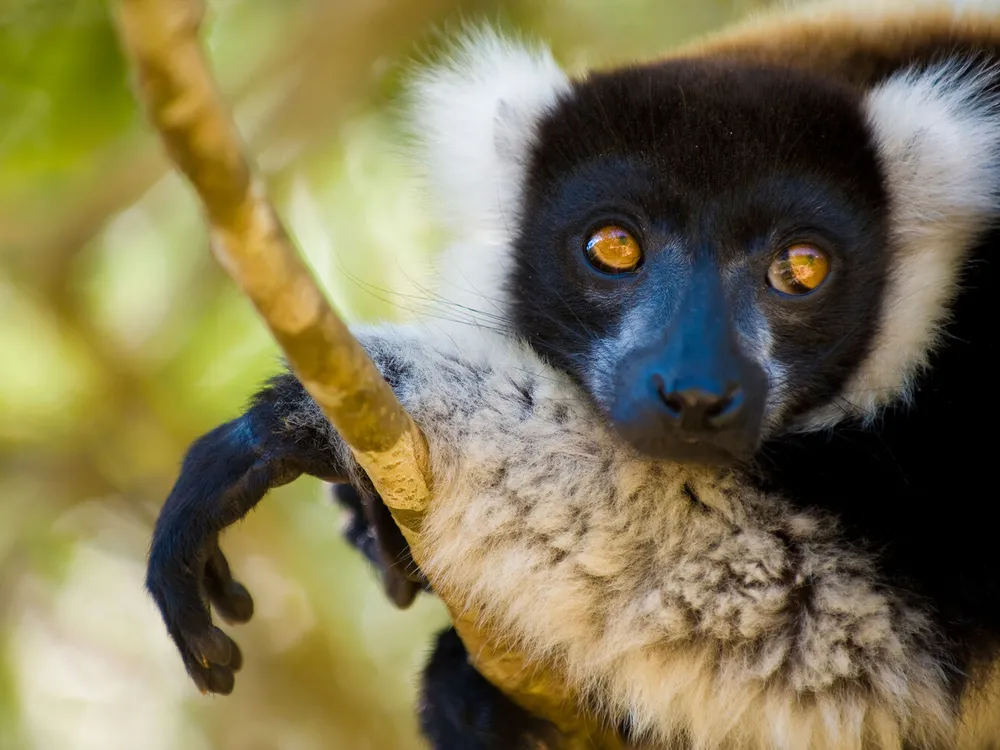
Every August, about halfway through his journey into Madagascar, veterinarian Randy Junge decides he’s never doing it again.
After 30 hours of travel from the United States to reach the island off the southeast coast of Africa, he and his colleagues face a 12-hour trip by car over roads that are “bad to nonexistent,” he says. Then a team helps them carry their gear to camp—a hike of 18 miles through the rainforest.
Once he recovers a little, though, Junge—who is the vice president of conservation medicine at the Columbus Zoo and Aquarium in Ohio—always changes his mind. He’ll be back. What stands to be learned about the long-term consequences of environmental change to the health of Madagascar’s lemurs is just too important.
Junge works with Andrea Baden, a biological anthropologist at Hunter College in New York, on a long-term project monitoring a remote population of black-and-white ruffed lemurs (Varecia variegata). Baden started the project at Ranomafana National Park in southeast Madagascar in 2005. Junge joined in 2017. Every summer, they camp out at the park for about ten days and work with a Malagasy team to capture lemurs; conduct medical exams; and collect blood, feces and other samples for later analysis. They also observe lemur families and social interactions. For the rest of year, Malagasy research technicians, guides and graduate students keep tabs on the lemurs’ activity.
Because the site is so arduous to reach, it remains a relatively pristine habitat with undisturbed lemurs. But there are signs that the globally transforming climate is changing these lemurs, too.
One of the researchers’ interests is the black-and-white ruffed lemurs’ fertility. The species breeds sporadically, but in 2024 the Ranomafana population had babies for an unprecedented second year in a row. The scientists fear that what looks like a miniature baby boom might actually be a sign that this species is in danger.
Did you know? Where do lemurs live?
Lemurs are only found in the wild on Madagascar and the nearby Comoro Islands. Like humans and chimpanzees, they are primates, though lemurs are more distant relatives of ours than the apes are.
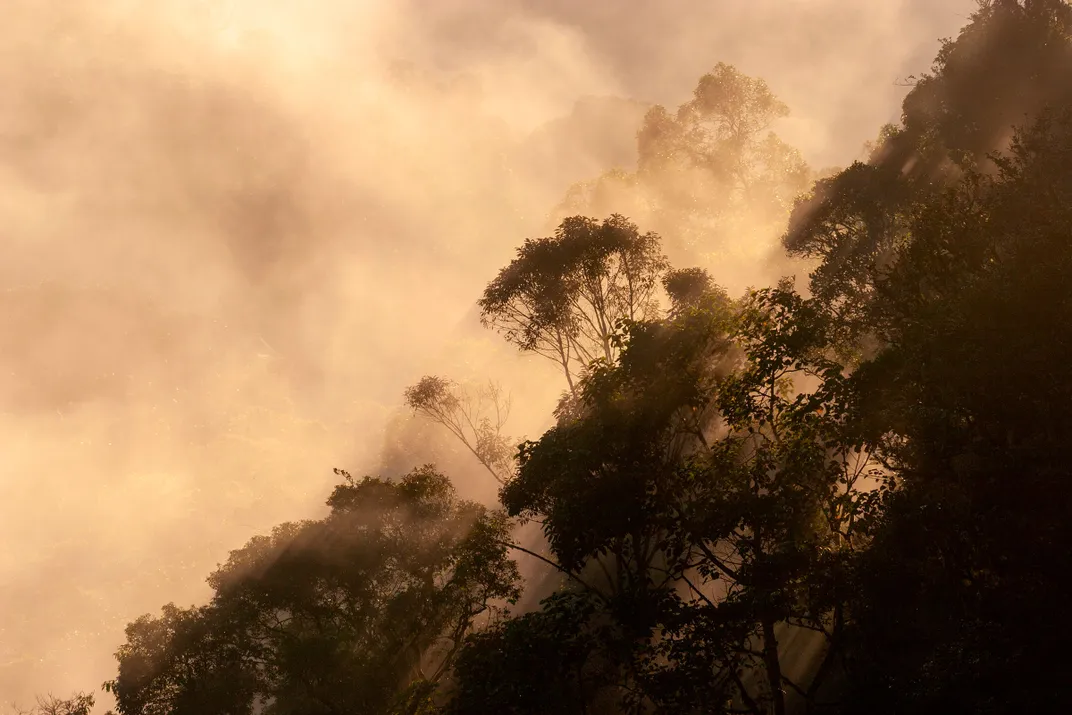
Wild animals face challenges that their captive counterparts don’t. Back in Ohio, Junge’s animal patients at the zoo “live a pretty soft life,” he says. The lemurs he sees in the rainforest, by contrast, bear signs of their tougher environment, such as cracked teeth or broken fingers that have healed crooked.
The environment also shapes reproduction. The pampered black-and-white ruffed lemurs in zoos breed every year and often bear litters of three to five infants. In their native habitat of Madagascar, where all wild lemur species dwell, the black-and-white ruffed lemurs have fewer babies at a time—if they get pregnant at all.
Like other lemur species in the wild, black-and-white ruffed lemurs live in the treetops, eat mostly fruit and breed within a specific window of time. But unlike their cousins, which breed annually or at regular intervals such as every other year, black-and-white ruffed lemurs have unpredictable gaps between birth years.
Their fickle fecundity is reinforced in a surprising way. Most of the time—as is the case with other lemur species—a female black-and-white ruffed lemur’s vulva has no opening at all. “They could not have sex if they wanted to,” Baden says. But for 24 to 72 hours around July of a lucky year, she says, “Their vagina will open like a flower.” There’s a brief frenzy of mating. Then the females close up shop again.
“It’s totally weird,” Baden says.

The result is a boom-or-bust baby cycle: In the years when the Ranomafana population breeds, usually 80 to 100 percent of adult females end up giving birth that October. A mother normally has two or three infants at a time, born helpless and with their eyes closed, “like puppies,” Baden says. Unlike nearly every other hairy primate, young black-and-white ruffed lemurs are unable to cling to their moms’ fur.
For the first month or so of life, the mom has to stay with her young nearly full-time in the nest—a high platform of branches and leaves. For maybe an hour each day, she leaves to forage fruit and to socialize. “Mom takes off and will literally make a beeline to other females’ nests and pop in and pay little visits,” Baden says.
After about a month, the mother moves her infants to a new nest, carrying them one at a time in her mouth. Outside this nest, an adult male or female will stand guard, letting the mother spend more time away.
Some moms continue parenting like this, Baden says. Others change tack, teaming up with their neighbors instead. They carry their babies to the nests of relatives or friends, or to crooks of trees, and park the kids together under the eye of a sentinel male, while all the moms go out. Baden compares this arrangement to a kindergarten. The mothers who take advantage of shared nests spend more time feeding themselves, and their infants seem more likely to survive, perhaps because more regular meals for mom translate into richer milk.
The synchrony of their reproductive habits helps to make this communal care possible. “Something in their environment tells them ‘yes’ or ‘no,’” Baden says. The availability of certain resources may serve as a signal to breed.
But no one knows exactly what that signal is, she says. “We’re only just starting to understand this system.”

From 2005 to 2023, Baden always saw two or more years between breeding seasons at Ranomafana. Gaps between breeding years seem to be the norm in other black-and-white ruffed lemur populations, too. In Madagascar’s Manombo forest, other researchers observed a stretch where black-and-white ruffed lemurs didn’t breed for five years.
That’s why, at Ranomafana in 2024, field observers were startled to see the lemurs mating for the second year in a row. To learn more about what was going on with the population, the U.S. scientists brought a portable ultrasound machine on their annual field visit. (Coincidentally, Baden was eight months pregnant at the time. She sent a graduate student in her place to make the long journey and hike. “I’m tough, but not that tough,” she says.)
The Ranomafana population consists of about 40 lemurs, with 15 or so adult females. As in other years, the team used tranquilizer darts to capture some of the lemurs. After using a net to catch each sleepy animal falling from the tree canopy, they collected medical data, conducted ultrasounds on the females and replaced radio collars as needed.
The team managed to get ultrasounds on seven of the females. The blurry black-and-white images revealed another surprise: pregnant mothers—but only some. Four of the seven females were pregnant (three with twins and one with a single fetus). In normal years, either none of the females get pregnant, or nearly all of them do. “Not half,” Junge says. Furthermore, he says, one fetus was about twice as big as all the others, suggesting its mother had bred early, outside of the usual window.
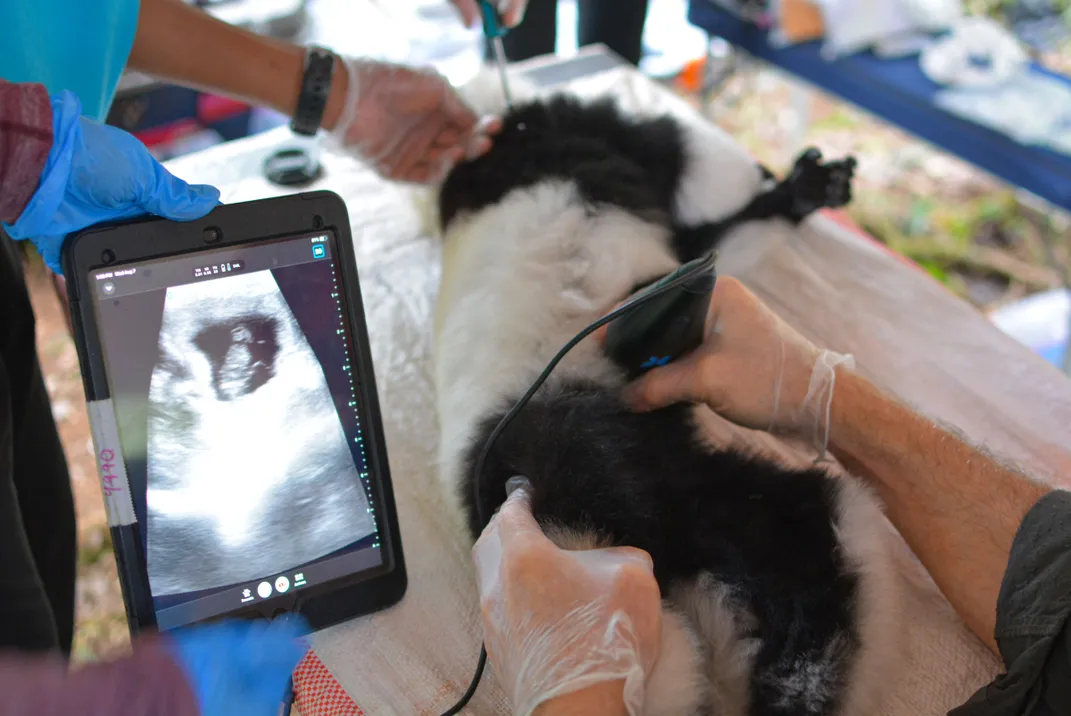
The scientists didn’t know how many of these fetuses would survive to term. Come fall, though, the infants arrived—not in October but mid-September, in yet another aberration from their usual pattern. Multiple litters were born. Some lemur moms successfully reproduced for the second year in a row.
Two years of babies might seem like a good thing. But Baden worries that the consecutive breeding years in Ranomafana hint at something different—perhaps a scrambling of whatever environmental cues usually synchronize their boom-or-bust communal breeding. “We’re seeing kind of wonky timing of reproduction, and we’re seeing the plants are fruiting and flowering at different times,” likely due to climate change, Baden says. “We’re seeing way drier wet seasons.” All in all, she says, “There may be some sort of breakdown in the system.”
Researchers estimated in 2019 that this species had declined by at least 80 percent over the prior two decades. If scientists can figure out what environmental cues influence the black-and-white ruffed lemurs’ reproduction, that knowledge could be critical for keeping them alive.
Junge is studying the lemurs’ blood to see if the presence of a certain vitamin or mineral in their diet, for example, predicts when they’ll breed. “For instance, if there was a critical nutrient they get from one tree that isn’t fruiting, it could upset the whole reproductive cycle,” Junge speculates. “It’s a little scary, because that ability to succeed may be a very fine line.”
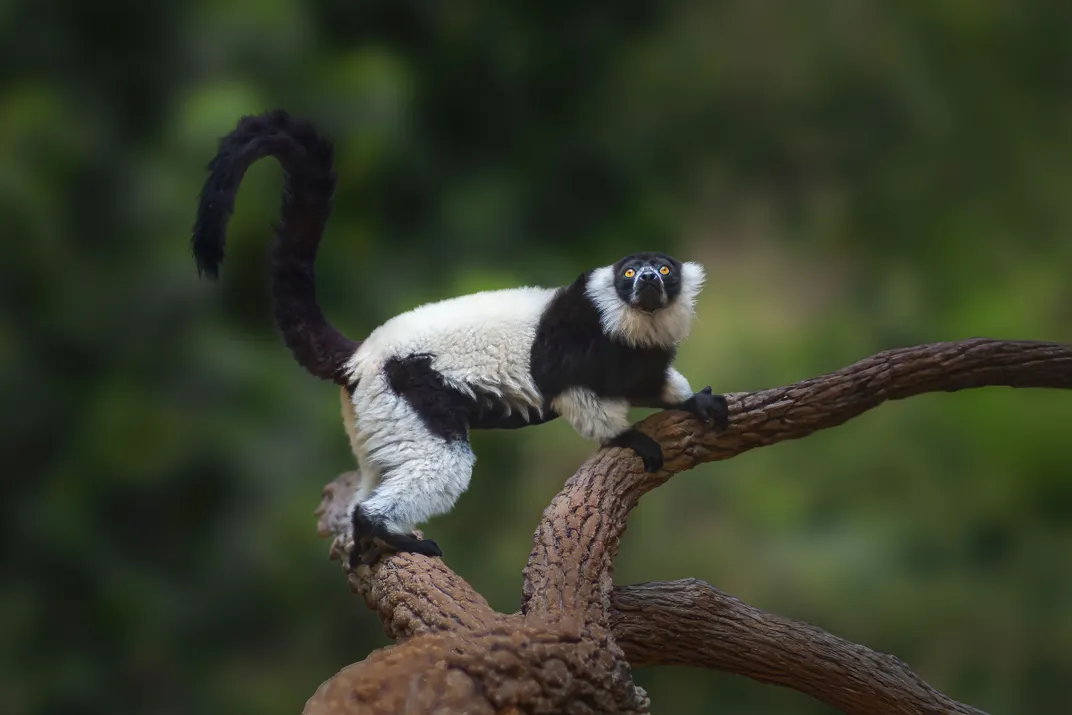
Climate change is rattling Madagascar and its wildlife beyond Ranomafana National Park.
In addition to warming and rainfall changes, cyclones are becoming more common and intense on the island. These storms knock down trees and leave holes in the canopy.
Increasing storms could disrupt the lemurs’ food supply. Because black-and-white ruffed lemurs have a more selective fruit diet than other species do, they may struggle to adapt when cyclones destroy their preferred feeding trees. The five-year breeding gap in one black-and-white ruffed lemur population came after an intense cyclone tore through their forest.
But climate change is only one of the environmental factors threatening Madagascar’s lemurs. Habitat loss is an ongoing problem that’s difficult to combat, as Harizo Georginnot Rijamanalina, one of Baden’s Malagasy graduate students, has seen firsthand.
Rijamanalina recalls visiting a forest in his village as a child. He was tagging along with his father, who was on a mining expedition. While his dad’s team dug their pit, Rijamanalina explored the forest, collecting sticks to make into toy weapons, while lemurs swung overhead.
That forest is still intact; Rijamanalina went home for a visit in 2022 and identified about 11 lemur species living there. After finishing his PhD at the University of Antananarivo in Madagascar’s capital city, he plans to take his expertise back home and work on conserving that site and its wildlife. But other areas of lemur habitat across the island have shrunk as he has grown up. The impacts of climate change on the forest, Rijamanalina says, are “exacerbated by intervention of local communities, who struggle from the difficult life.” In trying to survive, they log the forests, mine them for gold or gemstones, or hunt the lemurs themselves for meat.
“You see, every year, the forest [gets] pushed back,” says Tim Eppley, chief conservation officer at the U.S.-based conservation nonprofit Wildlife Madagascar. “It’s largely driven by lack of opportunity and food for the local human populations.”

As a result, Eppley says, lemurs today are in “a very precarious situation.” Nearly all of Madagascar’s more than 100 lemur species are threatened with extinction. “Many of them have very small populations that exist just within a single forest, or maybe a series of forest fragments,” Eppley says. Every population is critical to protect, scientists say.
Baden and her team hope that continuing the ultrasounds in coming field seasons, along with their other biomedical research, will unlock secrets about the black-and-white ruffed lemur’s fertility and unusual reproductive habits that could help safeguard the species. By tracking which lemurs get pregnant, then comparing the data to how the lemur families look later, the team can find out how many pregnancies arise from the short breeding season—and how many of those fetuses make it to term and survive.
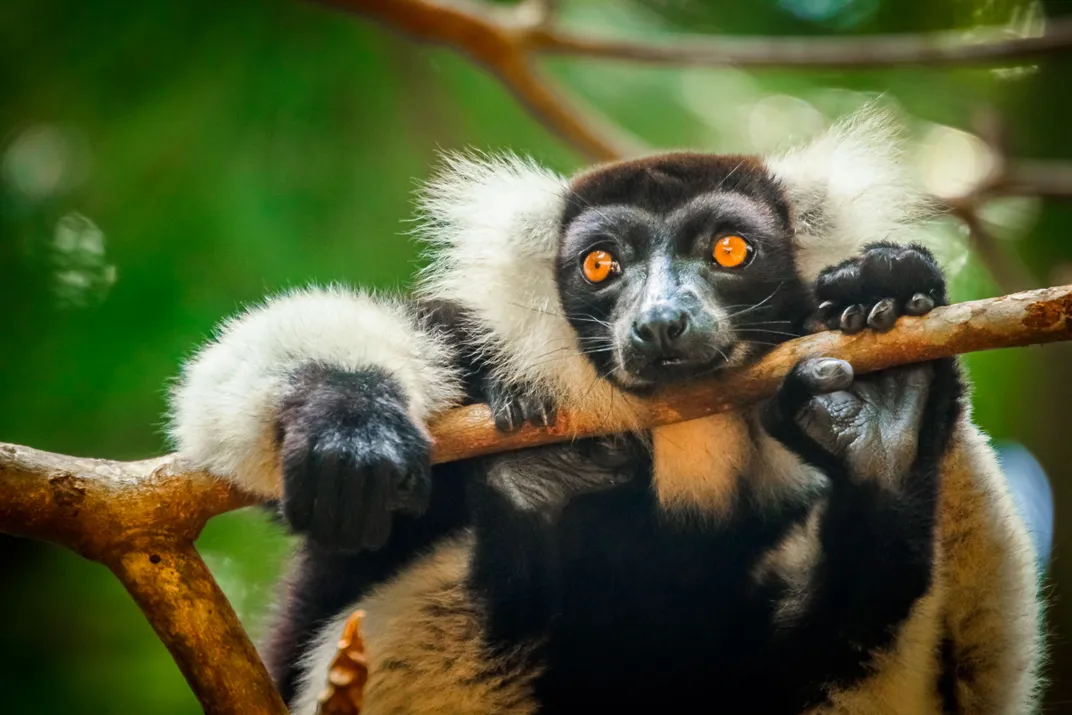
Even though some Ranomafana females gave birth in two consecutive seasons, “I’ll be curious to see what mortality looks like this time,” Baden says. She’s noticed more infants in recent years not making it to their first birthday. It could be yet another sign that, between the poorly understood lemurs and their shifting environment, some equilibrium is slipping.
Was the Ranomafana lemurs’ one weird year in 2024 the start of a trend that could hurt their odds of survival? Or just a fluke?
In 2025, the Malagasy team didn’t notice the lemurs mating and assumed things were back to normal. The U.S. researchers brought the portable ultrasound with them when they returned to the rainforest in August, though, just to be sure. And what they found was unprecedented: At least two females were pregnant, yet again.
If the babies make it to term, it will be one mother’s third straight year of breeding. She’ll birth those infants, though, into an uncertain future.
This story originally appeared in bioGraphic, an independent magazine about nature and regeneration powered by the California Academy of Sciences.

